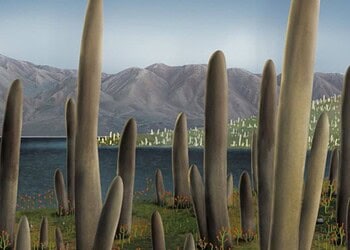
Music evokes feelings in humans and even in other animals. Some pieces can soothe, while others can energize. However, we weren’t expecting fungus to also exhibit this type of preference. It’s not entirely clear what kind of music fungus likes, but Trichoderma harzianum, often used to suppress pathogens, seems to grow better in white noise.
Sound helps things grow
Microbial ecologist Dr. Jake Robinson was studying the benefits of acoustic stimulation on the growth rate of a particularly useful fungus. Trichoderma harzianum promotes plant growth and protects them against various pathogens. It functions as a biocontrol agent by parasitizing harmful fungi which cause root and seedling diseases. Additionally, T. harzianum enhances nutrient uptake for plants, improves soil structure, and induces systemic resistance in plants, making it a valuable tool in sustainable agriculture.
The fungus is commonly used as a biofertilizer and biopesticide, becoming increasingly popular in environmentally friendly crop management strategies. If we could make it grow faster, it could help many farmers and habitats around the world.
“We strive to find novel ways to speed up and improve levels of beneficial fungi and other microbes in degraded soils. It could have wide-ranging benefits for restoring degraded landscapes and farming land to feed the world,” Robinson says.
The researchers already found that a monotonous ‘white noise’ triggered growth in the soil bacterium E. coli. So, they wondered whether the same could be the case with T. harzianum.
The team created soundproof booths in 80-liter plastic containers insulated with acoustic foam. In one container, one petri dish of the fungus remained isolated. Meanwhile, another was exposed to a 30-minute white noise sound session played at 8,000 Hertz (a frequency used in previous experiments that is close to the sound of old radio static). The sound-exposed T. harzianum grew 1.7 times greater in biomass than the other one.
Hard to say why it’s happening
Although the team is certain this is a valid measurement, they’re not sure exactly why this happens. It could be that the sound is triggering mechanoreceptors found in the fungus’s cell wall and this is somehow affecting the expressions of genes that control growth. However, this is all speculative at this point.
“While still in its early stages, the next steps will involve studying the microbiome response mechanisms, the flow-on effect on plants and how to scale it up in the field. We also need to understand whether this approach could have any potential cascading or unintended consequences,” the researcher adds.
The findings open up an intriguing avenue of research, suggesting that sound-based stimulation could become a tool for enhancing some types of agriculture. There could be many other plants and fungi that are affected by noise. And, if further studies confirm these results, we may be able to harness sound frequencies to accelerate production. Even if it’s just T. harzianum, it could still be very useful. Projections show the vast majority of the Earth’s land degraded by 2050. Restoration practices need all the help they can get.
However, there is much to learn before acoustic stimulation can be widely applied. Researchers must first ensure that the effects are reproducible in diverse environmental conditions and assess any potential long-term impacts on ecosystems. If the benefits outweigh the risks and costs, this discovery could revolutionize how we manage beneficial fungi and other microbes. This may yet provide an unexpected, sound-based solution to some of the world’s most pressing agricultural challenges.
Journal Reference: Sonic restoration: acoustic stimulation enhances plant growth-promoting fungi activity (2024) by Jake M Robinson, Amy Annells, Christian Cando-Dumancela and Martin F Breed will be published in Biology Letters (Royal Society Publishing) on 2 October 2024.






